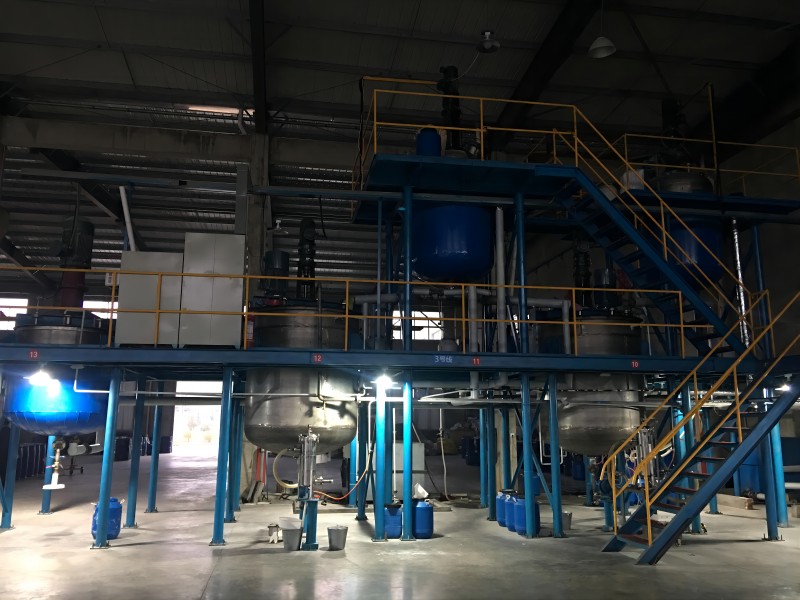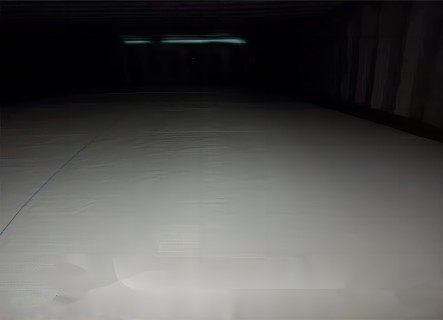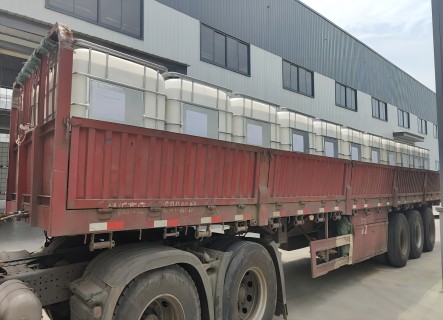
Defoamer And Antifoam Selection
Sep 08, 2023Before selecting the type defoamer, let's learn the principle of antifoaming agents
Principle of defoaming agent
Antifoam, also known as defoaming agent, has the following principles:
1. Decrease of local surface tension of foam leads to bubble burst
The origin of this mechanism is that high alcohol or vegetable oil is sprinkled on the foam. When it dissolves into the foam solution, the surface tension is significantly reduced. Because these substances are generally less soluble to water, the reduction in surface tension is limited to the local area of the foam, with little change in surface tension around the foam. The part with reduced surface tension is strongly pulled and extended in all directions, and finally breaks.
2. Destruction of membrane elasticity leads to bubble bursting
When the defoaming agent is added to the foam system, it diffuses to the gas-liquid interface, which makes it difficult for the surfactant with foam stabilization to recover the elasticity of the film.
3, promote the liquid film drainage
Defoamer can promote liquid film drainage, which leads to bubble burst, the rate of foam drainage can reflect the stability of foam, adding a material to accelerate foam drainage, can also play a defoaming effect.
4. Adding hydrophobic solid particles can cause bubbles to burst
On the surface of the bubble, the hydrophobic solid particles will attract the hydrophobic end of the surfactant, so that the hydrophobic particles will produce hydrophilicity and enter the water phase, thus playing the role of defoaming.
5, solubilizing foaming surfactant can lead to bubble burst
Some low molecular substances that mix well with the solution can cause the bubble surfactant to be solubilized and its effective concentration to be reduced. Low molecular substances with this effect, such as octanol, ethanol, propanol and other alcohols, can not only reduce the surfactant concentration on the surface layer, but also dissolve into the surfactant adsorption layer, reduce the tightness between the surfactant molecules,which weaken the stability of the foam.
6. Electrolyte dissolves the double electric layer of surfactant
With the help of foam surfactant double electric layer interaction, the stability of the foaming liquid, the addition of ordinary electrolyte can disintegrate the surfactant double electric layer and defoaming effect.
Classification of Antifoam
The commonly used defoamer can be divided into silicone (resin), surfactant, alkane and mineral oil according to their composition.
1, silicone (resin) class
Silicone defoamer is also known as emulsion type defoamer. The method of use is to emulsify silicone resin with emulsifier (surfactant) and disperse it in water and then add it to wastewater. Silica fine powder is another kind of silicon defoaming agent with good defoaming effect.
2, surfactant class
This kind of defoamert is actually an emulsifier, which makes use of the dispersion effect of surfactant to keep the foaming material in the water in a stable emulsion state and disperse, so as to avoid the formation of foam.
3. Paraffins
Paraffin defoamer is made by emulsifying paraffin wax or its derivatives with emulsifying agent, and its use is similar to that of surfactant emulsifying defoaming agent.
4. Mineral oil
Mineral oil was used as the main defoaming component. In order to improve the effect, sometimes mixed metal soap, silicone oil, silica and other substances used together. In addition, in order to make the mineral oil easy to diffuse to the surface of the foaming liquid, or make the metal soap evenly dispersed in the mineral oil, sometimes we also can add a variety of surfactants.
Advantages and disadvantages of different types of defoamer
Mineral oils, amides, low-grade alcohols, fatty acids and fatty acid esters, phosphates and other organic defoaming agents have been studied and applied earlier, belonging to the first generation of defoaming agents, which have the advantages of easy access to raw materials, high environmental performance and low production cost. The disadvantage is that the defoaming efficiency is low, the specificity is strong, the use condition is harsh.
Polyether defoamers are the second generation of defoaming agents, mainly including straight chain polyethers, alcohols or ammonia as the starting agent polyether, end group esterified polyether derivatives three kinds. The biggest advantage of polyether defoaming agent is its strong foaming inhibition ability. In addition, there are some polyether defoaming agents with high temperature resistance, strong acid and alkali resistance and other excellent properties; The disadvantage is that the use condition is limited by temperature, the use of narrow field, poor defoaming ability, low bubble breaking rate.
Silicone defoamers (the third generation of defoaming agents) have strong defoaming performance, rapid foaming ability, low volatility, no toxicity to the environment, no physiological inertia, wide range of use and other advantages, so it has a broad application prospect and huge market potential, but the foaming inhibition performance is poor.
Polyether modified polysiloxane defoamer has the advantages of polyether defoaming agent and organosilicon defoaming agent. It is the development direction of defoaming agent. Sometimes it can be reused according to its inverse solubility, but at present there are fewer types of such antifoaming agents, which are still in the research and development stage, and the cost of production is higher.

Methods of eliminating foam
1. Physical methods
In terms of physics, eliminating foam methods mainly include placed baffle or mesh, mechanical stirring, electrostatic, refrigeration, heating, steam generating, radiation, high speed centrifugal, pressure relief, the high frequency vibration, instantaneous discharge and ultrasonic acoustic liquid (control), etc., of these methods in different extent promoted through rate and liquid membrane on both ends of the gas bubble film of drainage, So that the stability factor of the bubble is less than the attenuation factor, and the number of bubbles gradually decreases. However, the common disadvantage of these methods is that the use of environmental factors of strong constraints, defoaming rate is not high, the advantages of environmental protection, high reuse rate.
2. Chemical methods
The methods to eliminate foam from the chemical point of view mainly include chemical reaction method and adding defoaming agent method.
Chemical reaction method refers to the chemical reaction between it and foaming agent by adding some reagents to generate substances insoluble in water,which reduce the concentration of surfactant in the liquid film and promote the bursting of foam. However, this method has disadvantages such as uncertain foaming agent composition and insoluble substances producing harm to the system equipment. Now the most widely used defoaming method in all walks of life is the method of adding antifoam. The biggest advantage of this method is that the breaking efficiency is high and the use is convenient, but finding the right and efficient defoaming agent is the key.

The choice of defoamert should conform to the following points:
1. Insoluble or insoluble in bubbling liquid
To burst the foam, the antifoamer should be concentrated and concentrated on the foam film. In the case of foaming agent, it should be concentrated and concentrated in an instant, and in the case of foaming inhibition, it should always be kept in this state. So the defoamert in the foaming fluid is supersaturated state, only insoluble or insoluble to easily reach supersaturated state. Insoluble or insoluble, it is easy to gather in the gas-liquid interface, easy to concentrate in the bubble film, in order to play a role at a lower concentration. For the antifoaming agent used in water system, the molecules of the active ingredients should be strong hydrophobic and weak hydrophilic, and the HLB value should be in the range of 1.5-3 for the best effect.
2, the surface tension is lower than the bubbling fluid
Only when the intermolecular force of the defoaming agent is small and the surface tension is lower than that of the foaming liquid, the antifoams can be immersed and expanded on the foam film. It is worth noting that the surface tension of the bubbling liquid is not the surface tension of the solution, but the surface tension of the foaming solution.
3. It has a certain degree of affinity with bubbling liquid
Because the defoaming process is actually the competition between the collapse rate of foam and the generation rate of foam, the defoaming agent must be able to disperse rapidly in the foaming solution in order to quickly play a role in a wider range of foaming solution. In order to make the defoamer disperse faster, the active ingredient of the antifoam must have a certain degree of affinity with the foaming solution. Defoamer active ingredients and foaming liquid too pro, will dissolve; Too sparse and difficult to disperse. Only affinity is appropriate, effectiveness will be good.
4. It does not react with the foaming liquid
Defoaming agent and foaming liquid reaction, on the one hand defoaming agent will lose its effect, on the other hand may produce harmful substances, affecting the growth of microorganisms.
5. Small volatility and long acting time
First of all to determine the need to use the system of defoaming agent, is a water-based system or oil system. If the fermentation industry, it is necessary to use oily defoaming agents, such as polyether modified silicon or polyether. Water - based coating industry will use water - based defoaming agent, silicone defoaming agent. Choose the defoaming agent, compare the amount of addition, in the reference price, can be obtained the most applicable and the most economical defoaming agent products.
Factors influencing the effect of antifoaming agent
1. Dispersibility of defoamer in solution
The dispersion state and surface properties of defoamer in solution significantly affect other defoaming properties. defoamers should have appropriate dispersion degree and too large or too small particle size will affect their defoaming activity.
2. Compatibility of defoamer in the foam system
When the surfactant is completely dissolved in an aqueous solution, it is usually aligned at the gas-liquid interface of the foam to stabilize the foam. When the surfactant is in an insoluble or supersaturated state, the particles disperse in the solution and accumulate on the foam, which acts as an antifoaming agent.
3. The ambient temperature of the foaming system
The temperature of the foaming liquid also affects the properties of the antifoaming agent. When the temperature of the foaming liquid itself is relatively high, it is recommended that special high temperature resistant defoaming agent must be used, because if ordinary defoaming agent is used, the defoaming effect will certainly be greatly reduced, and the defoaming agent will directly demulsify the emulsion.
4. Packaging, storage and transportation
antifoam is suitable for 5 ~ 40℃ storage, shelf life is generally 6-12 months. Do not place it near a heat source or expose it to sunlight. According to common chemical storage methods, ensure that after use sealed to avoid deterioration.
5, the proportion of defoamer
There is a certain degree of deviation between the addition of the original solution and the addition of the diluted solution, and the proportion is not equal. Due to the low concentration of surfactant, the diluted defoaming agent emulsion is extremely unstable and will not be stratified soon. The defoaming performance is relatively poor, and it is not suitable for long-term storage. It is recommended to use immediately after dilution.
The proportion of adding defoaming agent needs to be verified by field test, and should not be overadded.
